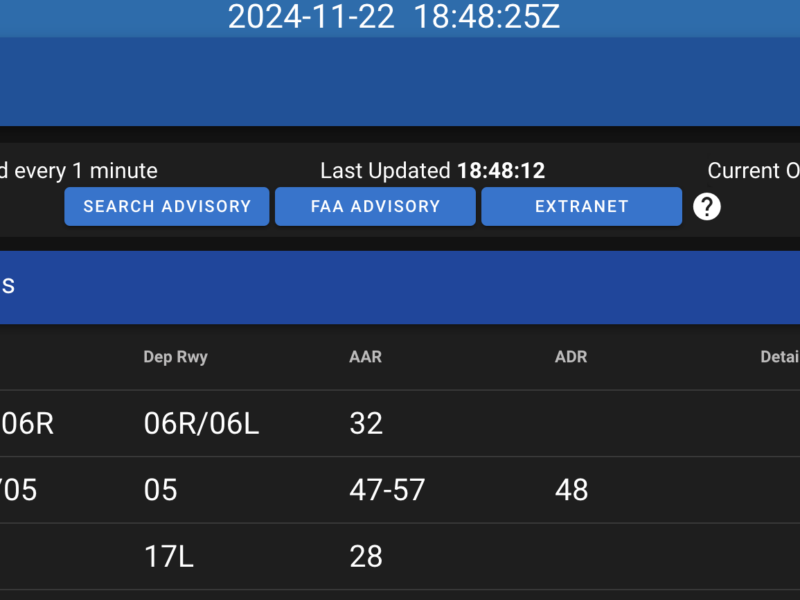This weekend was perfect for flying. The weather was great, with exceptional visibility (especially today).
As previously noted, I missed my class on Saturday. I did, however, get up on Sunday and twice today.
Yesterday was fun. I didn’t have my normal instructor, so it was interesting to see how things were done with someone different. We did a few take offs and landings, then it was on to the fun stuff – Flapless landings and comm. failures.
Ironically enough, the flapless landings that I did yesterday were the best landings I had done to date. We combined the flapless landings with a comm failure on final. This is where the tower uses light signals to communicate with you. As we’re approaching the runway, I see a solid green light from the tower – cleared to land!
Yesterday was also the first time I flew a particular 172.
Today’s two flights was more circuit practices with a few 0 flap landings tossed in there for good measure. We also did some simulated engine failures in the circuit. My FI would cut the power and I would turn straight to the threshold. Normally you would use your power to control your altitude, in this case you can’t because you don’t have a working engine! So what do you use to control height? Your flaps! The only problem is.. you can only go one way. If you’re too high, add some flaps. If your too low though, you better start looking for someplace else to land.
I also spent about 45 minutes copying the entries out of my PTR into my paper log book. Hint: don’t wait three months to do that next time.
My FI is confident that I’m ready to go solo in the next two or three lessons. I’m excited. I still need to write my PSTAR test though. This week is going to be chock full of studying for it and memorizing my emergency checklists.
I saw a fellow classmate’s photo on the “we’ve gone solo” wall at the school. I hope I don’t forget to let him know when classes start up again in May.
Even though my lessons were shorter than normal this weekend, I’m still happy with the 3.2 hours chocked up.


This is another old-insructor’s tale. You can, in fact, retract your flaps at any time, including during an approach, provided that (a) you’re ready to deal with whatever pitching moment the retraction causes (probably a pitch down for a 172), and (b) you’re ready to push forward on the yoke even more if you’ve let your speed decay (which is hard to do, psychologically, when you’re already low and slow) — that’s probably why instructors are nervous about letting students do it.
The best thing to do is not to take my or your instructor’s word for it, but to see for yourself (at a safe altitude for stall recovery): the next time you’re in a practice area: set up a glide at approach speed with full flaps, then retract the flaps and watch what happens. Try the same thing at a much slower speed, just above stall, and note how you have to push forward to keep the plane from mushing or stalling. Until you’re above ground effect, there’s nothing magic about being an approach — the plane will behave exactly the same way as it does in your test glide at 2,000-3,000 ft.
You don’t want to make a habit of doing this on an actual approach, but it could be useful in a real-life emergency some time.
Yup! My instructor did say that it is possible to retract your flaps if you find your descent rate is too fast.
Apparently though, the Transport Canada examiners don’t like to see that on your final exam.
Ahh Blake, your sites always so useful especially since you have a lot more hours than I do :-) But in any case the PSTAR is so easy! you can do it! Just use that study guide you posted in your earlier blog. Very useful. Took 25 minutes to write, maybe less. After all, if you can’t answer the question within 30 sec, you don’t know it.
Tigurius,
I’m a perfectionist. must get 100% ;)
I’m glad that you find the site so helpful.. thats the main reason why I have it up.